When it comes to drilling into tough materials like concrete, brick, or stone, regular drill bits just won’t cut it. That’s where SDS drill bits come in. These specially designed bits are made for use with rotary hammers and are specifically engineered for heavy-duty tasks that require extra power.
The SDS (Slotted Drive System) bit system has been around for decades and was originally developed by Bosch in the 1970s. It quickly became a preferred choice in construction, masonry work, and demolition because of how easily these bits can tackle hard surfaces. This system allows the drill bit to move backward and forward, enhancing the hammering action of rotary hammers. The efficiency and durability of SDS bits make them a go-to for professionals and DIY enthusiasts alike.
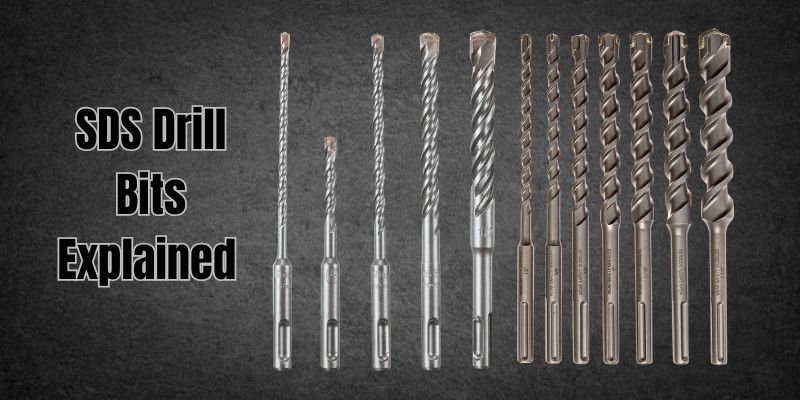
Types of SDS Drill Bits
Understanding the different types of SDS drill bits is crucial for picking the right tool for the job. While they all share the same basic mechanism, the main differences lie in their size and application. The three most common types of SDS drill bits are SDS, SDS Plus, and SDS Max.
1. SDS Drill Bits
SDS drill bits were the original type in the family. These bits are typically used in lighter rotary hammers and are great for DIY projects and light construction tasks. Although not as common now due to the popularity of SDS Plus, SDS bits still have their place, particularly in older tools that still support them.
2. SDS Plus Drill Bits
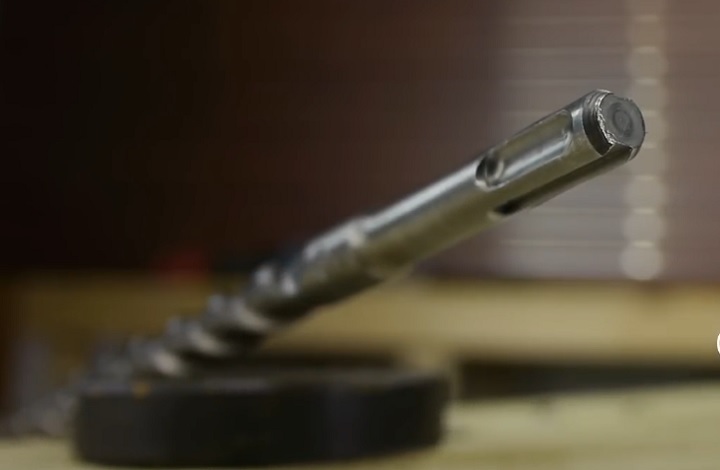
SDS Plus bits are the most commonly used type today. They are versatile and offer a good balance between power and ease of use. SDS Plus bits are typically used in medium-duty applications, such as drilling into concrete or brick for projects like installing anchors, bolts, or pipes. They come in various sizes, but the shank of an SDS Plus bit is generally 10mm in diameter, which fits into most modern rotary hammers.
3. SDS Max Drill Bits
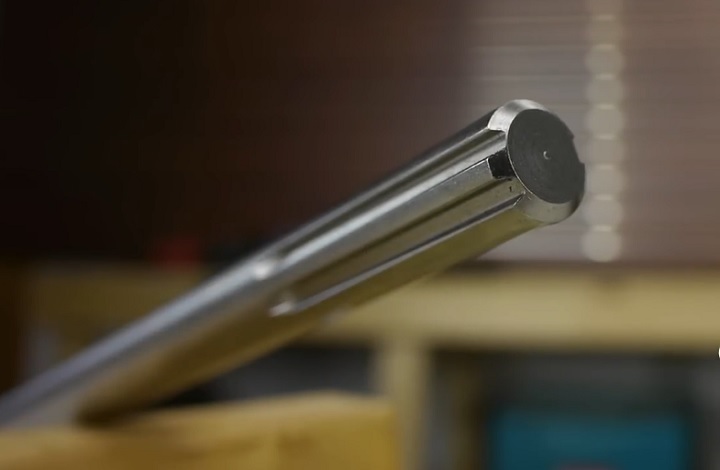
For larger jobs, SDS Max drill bits are the go-to choice. These bits are designed for heavy-duty tasks, such as demolition and drilling large holes in concrete or stone. SDS Max bits have a thicker shank (18mm), which allows them to withstand more pressure and deliver greater impact energy. If you’re working on a big project that involves breaking through thick materials, SDS Max bits are a must-have.
Key Takeaway:
- SDS Plus is great for most DIY and construction tasks, while SDS Max is more suited for large, commercial projects.
How SDS Drill Bits Work
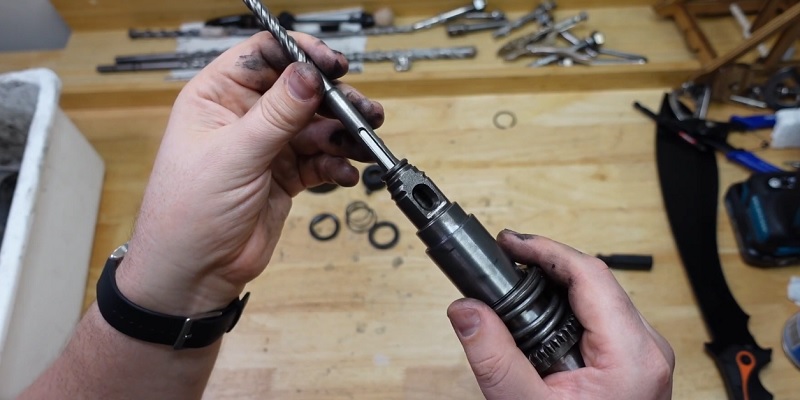
SDS drill bits work differently than traditional drill bits, and their design makes them highly effective for drilling into tough surfaces. The key feature of SDS bits is the shank—the part of the bit that is inserted into the drill. The shank has specially designed slots or grooves that allow it to move freely within the drill’s chuck while staying firmly in place.
Here’s how it works:
- The rotary hammer’s piston drives the bit back and forth, creating a hammering action.
- At the same time, the bit rotates to grind away at the material, whether it’s concrete, brick, or stone.
- Because of the slots in the shank, the bit doesn’t spin loosely but moves with precision inside the chuck.
This dual-action—rotation combined with hammering—makes SDS drill bits perfect for hard materials that require more than just simple rotation.
The self-locking mechanism in SDS drills allows the bits to be changed quickly without needing to tighten or loosen a chuck manually. This feature is extremely helpful in fast-paced work environments, saving time and reducing frustration when switching between tasks.
Key Advantages of SDS Mechanism:
- Faster Drilling: The hammer action accelerates the drilling process, making it quicker to drill into hard materials.
- Less Fatigue: The rotary hammer does most of the work, meaning less physical effort is required from the user.
- Precision: The SDS system ensures that the bit doesn’t slip or rotate improperly, resulting in more accurate holes.
Uses of SDS Drill Bits
SDS drill bits are designed to handle some of the toughest materials you’ll come across in construction or renovation projects. Whether you’re a professional contractor or a weekend DIY enthusiast, SDS drill bits are indispensable for specific tasks.
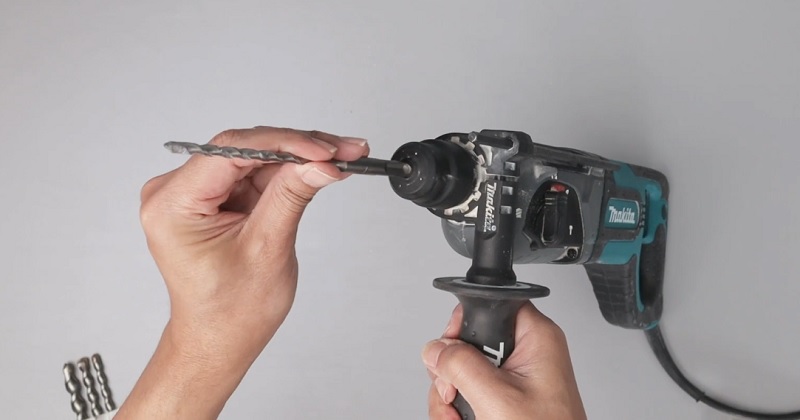
Concrete and Masonry
The primary use of SDS drill bits is for drilling into concrete, brick, stone, and masonry. These are materials where regular drill bits would struggle or wear out quickly. An SDS bit can power through concrete with ease, making it ideal for tasks like installing rebar, anchors, or long bolts.
Demolition
When paired with an SDS Max bit, rotary hammers can also be used for demolition work. Whether you’re breaking up old concrete slabs or chipping away at stone, the powerful hammering action of an SDS Max bit is more than up to the task.
Metal and Wood
While SDS bits are mainly used for masonry and concrete, certain types can also be used to drill into softer materials like metal and wood. However, this is less common, and it’s generally better to use standard drill bits for these tasks unless you’re working with extremely dense wood or metal structures.
DIY and Home Projects
SDS drill bits are not limited to professional construction sites. Homeowners who regularly undertake DIY projects can benefit from SDS Plus bits for tasks like hanging shelves on brick walls, installing plumbing in a concrete floor, or even securing heavy-duty fixtures into masonry.
Key Takeaway:
- SDS drill bits excel at drilling into concrete, brick, and stone but are versatile enough to handle some metals and woods in specific situations.
Applications Breakdown: When to Use Each SDS Type
To help you make a quick decision, here’s a breakdown of when to use SDS, SDS Plus, and SDS Max:
| Type | Best for | Typical Use Cases |
|---|---|---|
| SDS | Light-duty drilling in brick and masonry | Small anchor holes, light DIY projects |
| SDS Plus | Medium to heavy-duty drilling and chiseling | Installing anchors, concrete demolition |
| SDS Max | Heavy-duty demolition and industrial projects | Breaking concrete slabs, roadwork |
Buying Guide for SDS Drill Bits
Choosing the right SDS drill bit can make a significant difference in your work’s efficiency and the lifespan of your tools. Not all SDS bits are created equal, and understanding the factors to consider when purchasing them will ensure you get the right bit for the job. In this guide, we’ll cover the key aspects you should keep in mind before making a purchase.
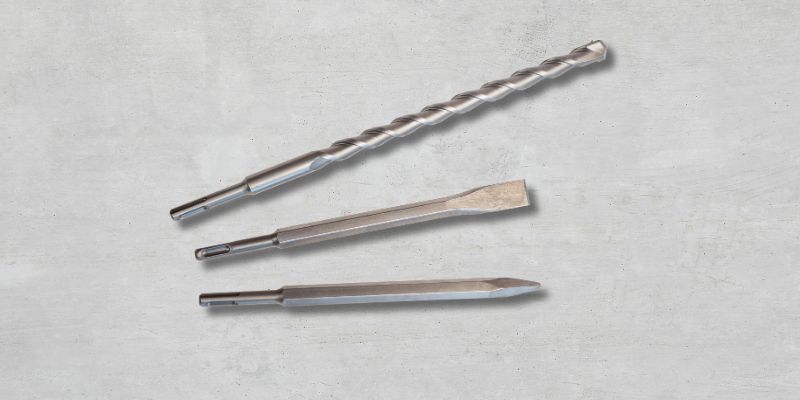
Selecting the Right Size
The size of your SDS drill bit will largely depend on the task at hand. SDS drill bits come in various diameters and lengths, and it’s important to choose one that matches your needs.
- Diameter: The diameter of the bit will determine the size of the hole you drill. Common SDS Plus bit diameters range from 5mm to 30mm, while SDS Max bits can go up to 50mm or more. For smaller tasks like installing anchors or bolts, a 6mm or 8mm bit might suffice. For larger jobs like pipe installation or rebar drilling, you’ll need a thicker bit.
- Length: The length of the bit is also important, especially when drilling deeper holes. SDS drill bits typically range from 110mm to 1000mm in length. For shallow holes, a shorter bit will do, but if you’re drilling through thick walls or concrete slabs, you’ll need a longer bit.
Tip: Always ensure that your drill can accommodate the bit length and diameter you’re choosing. Overloading a drill with an oversized bit can lead to poor performance or even damage to the tool.
Material and Coating
The material and coating of your SDS drill bit affect both its durability and performance. The most common materials used for SDS drill bits are carbide, metal, steel, alloy steel, and carbon steel. Not all bit materials are suitable for every surface, so understanding the type of bit you need can help you avoid premature wear and tear.
- Carbide-tipped SDS bits: These are the most common and durable options for drilling into tough materials like concrete and stone. Carbide tips are hard, heat-resistant, and can handle repeated impact without dulling quickly. They are ideal for use with rotary hammers and in high-impact situations.
- Titanium-coated SDS bits: Titanium coatings reduce friction and help keep the bit cooler during use, making them ideal for drilling into metals or tougher woods. However, they are less commonly used for masonry tasks.
Tip: For most home improvement and DIY tasks involving concrete or masonry, a carbide-tipped SDS bit will be sufficient. Only opt for titanium coated bits if you are working with extremely tough materials and need the added durability.
Selecting the Right Type
SDS drill bits are designed for light to medium-duty tasks. These are often used with older rotary hammer models or for lighter drilling jobs that don’t require as much force or precision.
SDS and SDS Plus comes down to the shank design and the level of power. SDS Plus is essentially an upgraded version of SDS, with more slots for improved retention and torque. SDS Plus bits provide more power for medium-duty tasks, whereas SDS bits are often used for lighter applications.
SDS Plus is more versatile and widely used today, largely because most modern rotary hammers are compatible with SDS Plus bits. If you’re using older equipment, you might still encounter SDS bits, but most professionals and DIY enthusiasts have upgraded to SDS Plus for the enhanced performance.
SDS Max bits are designed for heavy-duty construction and demolition. If you’re working on a large construction project, drilling through thick concrete or doing substantial demolition work, SDS Max is the better option. The larger shank allows for more impact energy, meaning faster drilling and better performance in tough materials.
Key Consideration: Before purchasing, check the compatibility of your rotary hammer. SDS Plus and SDS Max bits are not interchangeable, so you’ll need to make sure the bit matches your drill.
Are SDS and SDS Plus Interchangeable? The short answer is: No, SDS and SDS Plus are not fully interchangeable. While SDS Plus bits can sometimes fit into older SDS rotary hammers, they won’t perform optimally. The increased torque and impact force of SDS Plus bits require compatible tools to maximize their benefits. Additionally, the slight difference in shank diameter between SDS and SDS Plus means that, even if they fit, the performance may be compromised.
If you have an older SDS drill, it’s worth upgrading to an SDS Plus rotary hammer to get the most out of your drilling tasks. SDS Plus tools are widely available, and their bits are far more common in today’s market.
Durability and Lifespan
The lifespan of an SDS drill bit depends on several factors, including the material being drilled, the type of bit, and how often it’s used. However, there are ways to extend the life of your bits:
- Use the right bit for the material: Using a bit that’s not suited for the material will wear it down quickly. For instance, using an SDS Plus bit on extremely tough concrete may cause it to wear out faster than if you used an SDS Max bit.
- Keep the bit cool: Drilling generates heat, which can dull your bit. To prolong the life of your bit, give it time to cool down between uses or consider using a cooling lubricant.
- Proper storage: Store your SDS bits in a cool, dry place to prevent rust or corrosion. Many SDS bits come with protective cases, which are useful for keeping them in good condition when not in use.
Tip: If you’re frequently using your SDS drill bits, consider buying a set with multiple sizes and spares. This will save you time and money in the long run, as you’ll have the right bit on hand for any project.
Price vs. Quality
When buying SDS drill bits, price is an important factor to consider. While it may be tempting to opt for cheaper bits, you often get what you pay for. Cheaper bits may dull faster, break, or perform poorly under heavy use.
- Budget Options: These are suitable for light DIY tasks where precision isn’t as critical. If you’re only drilling into masonry occasionally, a budget option can work well for you. However, they may not last as long and could wear out more quickly with repeated use.
- Mid-Range Options: A good balance between price and durability. These bits are great for homeowners or contractors who need reliable bits for regular use but don’t require the extreme durability of high-end products.
- High-End Options: Professional-grade bits that are designed to last and handle the toughest jobs. These are typically more expensive but are a better investment for commercial use or heavy-duty tasks. Brands like Bosch, Makita, and Hilti are known for producing high-quality SDS drill bits that last longer and perform better.
Tip: If you’re working on a big project, it’s worth investing in mid-range to high-end SDS drill bits. Their durability will save you time and effort in the long run, as you won’t need to replace them as often.
Best Brands for SDS Drill Bits
When choosing SDS drill bits, sticking with well-known and trusted brands ensures you’re getting a quality product. Here are some of the top brands to consider:
- Bosch: Bosch is the inventor of the SDS system and continues to be one of the leaders in SDS drill bit technology. Their bits are durable, reliable, and suitable for both professional and DIY use.
- DeWalt: Known for its high-performance tools, DeWalt offers a wide range of SDS drill bits designed for both SDS Plus and SDS Max rotary hammers. Their bits are built to last and perform well under heavy loads.
- Makita: Makita is another top brand known for its high-quality tools. Their SDS bits are durable and designed to handle the toughest jobs, making them a favorite among professionals.
- Hilti: If you’re looking for heavy-duty, professional-grade SDS bits, Hilti is a top contender. While they tend to be more expensive, they offer excellent durability and performance.
Tip: It’s always a good idea to choose a bit that’s compatible with your drill. Most top brands offer detailed guides on compatibility, so be sure to check the product specs before buying.
SDS Drill Bit Maintenance Tips
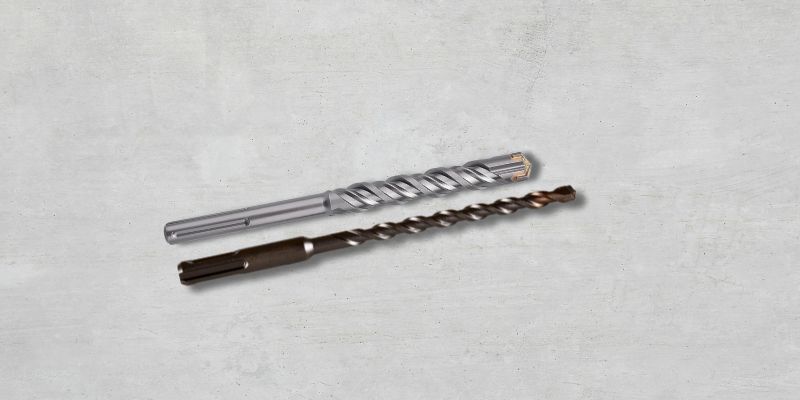
To get the most out of your SDS drill bits, proper maintenance is essential. Here are some tips to keep your bits in top condition:
- Keep them sharp: If you notice that your bit is becoming dull, you can use a drill bit sharpener to restore its cutting edge. A sharp bit will drill faster and require less effort.
- Clean the bit after each use: Debris like dust and particles can build up on the bit after drilling. Wipe it down with a dry cloth to remove any buildup and prevent corrosion.
- Inspect for damage: After each use, check your bit for signs of wear, such as cracks or chipped edges. If the bit is damaged, it’s best to replace it to avoid poor performance or injury.
Final Words
SDS drill bits are an invaluable tool for both professionals and DIY enthusiasts working with tough materials like concrete, stone, and masonry. Whether you need a bit for light drilling or heavy-duty demolition, there’s an SDS bit out there that’s perfect for the job.
When selecting an SDS drill bit, always consider the size, material, and application. For most household tasks, an SDS Plus bit will suffice. However, if you’re working on larger construction projects, SDS Max bits offer the durability and power you’ll need. Investing in high-quality SDS drill bits from trusted brands like Bosch, DeWalt, or Makita ensures long-lasting performance, making your work easier and more efficient. With the right bit in hand, you’ll be able to tackle any masonry or concrete drilling project with confidence.
FAQs About SDS Drill Bits
Can I use SDS bits in a regular drill?
No, SDS bits won’t work in regular drills because they have a special locking system. SDS bits need specific slots to lock into SDS drill holders. Using them in regular drills can damage both the bit and the drill. Always match your bits to the right drill type.
What’s the lifespan of an SDS drill bit?
An SDS bit typically lasts 6-12 months with regular use. The life of your bit depends on how often you use it, what materials you drill into, and how well you maintain it. Drilling into hard materials like concrete wears bits faster than softer materials.
Can you use SDS drill bits for wood?
While SDS bits can drill through wood, they’re not the best choice. These bits are made for concrete and masonry. Using them on wood might split or tear the material. For wood projects, choose regular wood drill bits – they’ll give you cleaner holes and work faster.
How do I know when my SDS drill bit is worn out?
Check your SDS bit for these signs: dull or rounded cutting edges, visible cracks, bent tip, or slow drilling speed. If you need more force to drill or see burn marks on materials, it’s time to replace the bit. Good bits help you work faster and drill clean holes.
Should you grease SDS bits?
Yes, put a thin layer of grease on the SDS bit’s shaft (the part that goes into the drill) every few uses. This helps the bit slide in and out smoothly, stops rust, and makes your drill work better. Don’t grease the cutting end of the bit. Regular machine grease or special SDS grease both work well.
Remember these key points: regular greasing makes the drill and bits last longer, keeps the chuck healthy, and stops bits from getting stuck. Just like you can see below, keeping your drill in good shape reduces breakdowns and makes your work easier.
My SDS drill bit gets stuck in the concrete. What should I do?
Stop drilling if your bit gets stuck. Don’t force it. Put your drill in reverse mode and gently pull back. If it’s still stuck, try hammer-only mode to loosen it. Add breaks when drilling deep holes and clear dust often to stop bits from getting stuck.
Can I sharpen my SDS drill bit at home?
Yes, you can sharpen SDS bits using a bench grinder with a fine wheel. Keep the bit at its original angle (usually 118 degrees), move it steadily across the wheel, and cool it in water often. But for carbide-tipped bits, it’s better to buy new ones as home sharpening might damage them.


